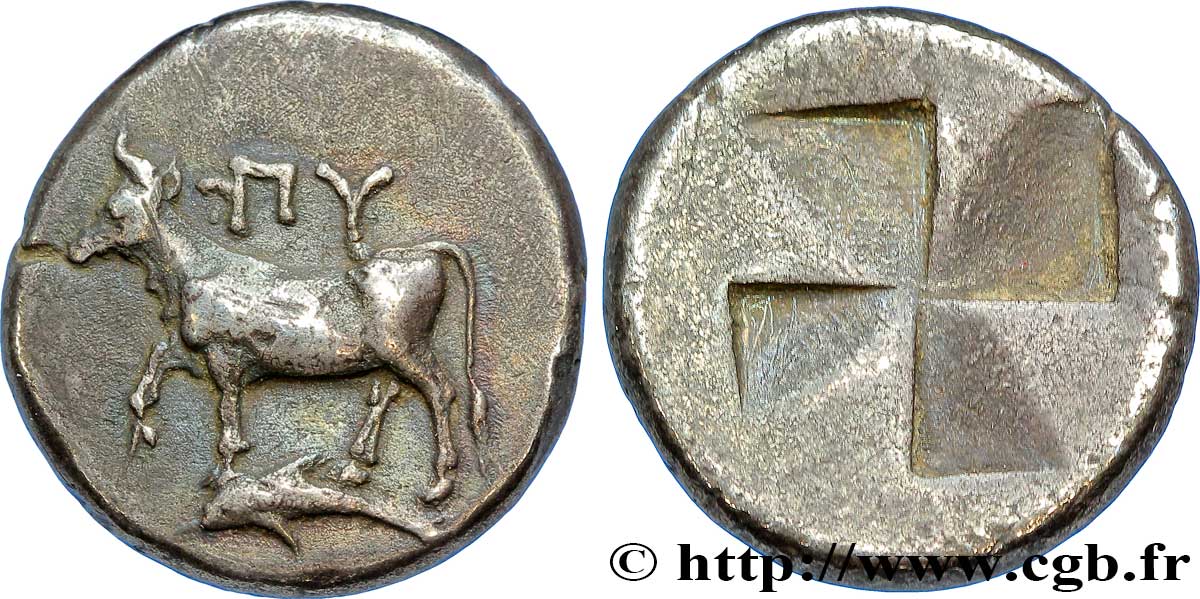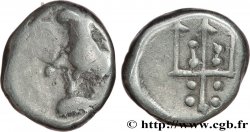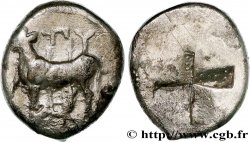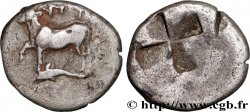v59_0057 - THRACE - BYZANTION Drachme ou sicle
MONNAIES 59 (2013)
Starting price : 350.00 €
Estimate : 550.00 €
Realised price : 350.00 €
Number of bids : 1
Maximum bid : 418.00 €
Starting price : 350.00 €
Estimate : 550.00 €
Realised price : 350.00 €
Number of bids : 1
Maximum bid : 418.00 €
Type : Drachme ou sicle
Date: c. 416-357 AC
Mint name / Town : Byzance, Thrace
Metal : silver
Diameter : 18 mm
Orientation dies : - h.
Weight : 5,25 g.
Rarity : R1
Coments on the condition:
Exemplaire sur un un flan large et ovale, parfaitement centré des deux côtés. Très jolie représentation au droit. Belle patine de médaillier avec des reflets mordorés. Conserve une partie de son brillant de frappe
Predigree :
Cet exemplaire provient du stock du Crédit de la Bourse (Yves Cellard) en 1990 et de la collection du docteur Thierry de Craeker
Obverse
Obverse legend : (BY) ARCHAÏQUE.
Obverse description : Vache passant à gauche, placée sur un dauphin tourné à gauche.
Reverse
Reverse legend : ANÉPIGRAPHE.
Reverse description : Carré creux en ailes de moulin.
Commentary
Exemplaire tout à fait exceptionnel pour ce type de monnayage.








 Report a mistake
Report a mistake Print the page
Print the page Share my selection
Share my selection Ask a question
Ask a question Consign / sell
Consign / sell
 Full data
Full data










